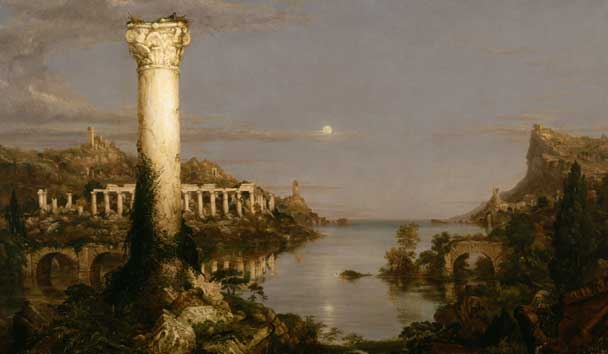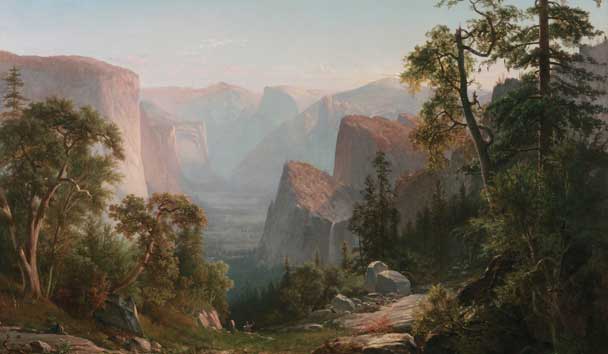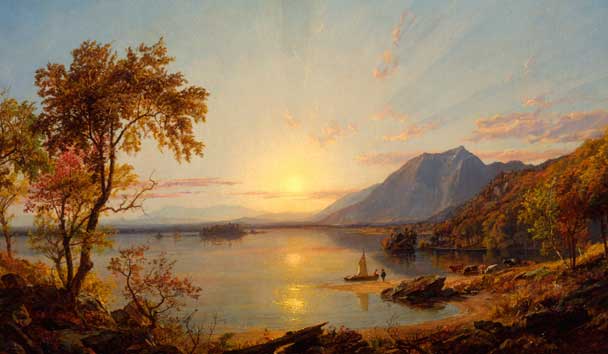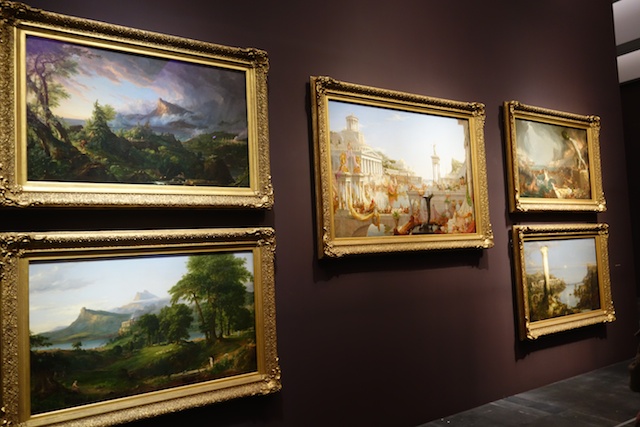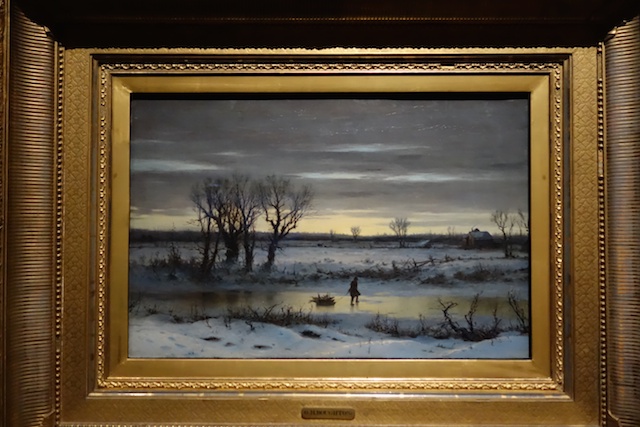Nature and the American Vision: The Hudson River School at LACMA
December 7, 2014 – June 7, 2015
The Course of Empire: Desolation, 1836 by Thomas Cole
The latest opening at LACMA is a robust collection of paintings from the Hudson River School, an art movement of American painters of the 19th century, inspired by and generally focused on, the landscape of upstate New York. Several painters of this school also painted European landscape (matching their skills against the great landscape painters of the Continent), and some headed West to tackle the largesse and sculptural beauty of the American West. The show at LACMA, Nature and the American Vision: The Hudson River School, includes a few spectacular canvases of Yosemite and Donner Pass (of which we, as Californians, are especially enamored).
View of the Yosemite Valley, 1865 by Thomas Hill
The movement favored deep, deep depth of field and a density of detail and the canvases have the scope and mood of great landscape photography (which came later). Compare the sense of space and luminous light in Hill’s depiction of Yosemite to Ansel Adams’ iconic black and white images of California’s most famous Valley. Both have magnificent scope and both a reverence for nature – Adams’ light is sharp and precise but Hill’s romantic vision is able to capture an other-worldly sense of light.
Sunset, Lake George, NY 1867 by Jasper Francis Cropsey
At first glance, many Hudson River School canvases look hyper-real, bathed in a luminosity that seems unnatural. And yet, ff you have ever spent time in upstate New York — or Yosemite at a certain time of day – you’ll know that the light captured in these canvases is not exaggerated. The land really can look that ethereal and perfect.
The Course of Empire
At the center of this exhibit are five large-scale canvases that comprise Thomas Cole’s The Course of Empire – and, LACMA’s curators are very excited because this suite of heavily-framed and pristine canvases have never been West of the Mississippi. The five paintings are hung as the painted intended them to be hung and tell the story of mankind’s impact on nature. They are in their original gilded frames, which lend an air of grandeur that matches the subject matter of the work.
Here’s how to decipher the message of these canvases: Look carefully for the same rock outcropping in each painting, and follow the story of that parcel of earth. Named “The Course of Empire” the work racks the progress of man’s impact on the land. First, the beauty of an unspoiled landscape dominates and then we see the first settlers on the land, then gradually a bustling, elegant city is built upon the river. Then, there is devastation to the city and the final painting, Desolation, is absent of people and rife with decaying columns and temples.
LACMA’s Curator of American Art, Ilene Susan Fort, told a nice story about the intrigue of the storytelling contained in these paintings. The electrician charged with lighting the show was fascinated with the smallish figures in each painting, so paid extra attention to insuring that the tiniest secrets of the painting were able to be seen by the naked eye.
In fact, LACMA will provide binoculars for viewers to see everything in the paintings hung up high.
How Kids Can Navigate the Show
Kids may actually find more to look at in these paintings than you might initially think. Every single painting has several small figures that are fun to locate and think about. Dogs, kids, birds, animals, etc. are painted in painstaking detail and provide the viewer a ‘narrative starting p0int’ to comprehend the message of the painting. In the vast Yosemite Valley painting, have them search for a small boy who is hiding behind a rock in the bottom left of the canvas. The boy is looking at two other figures who are making their way towards the valley on horseback. What are they doing? Each canvas has similar figures that offer a chance to make up a story about the painting – offering a point of engagement with your kids about the work.

